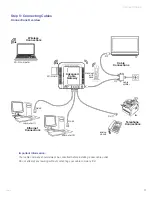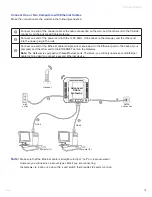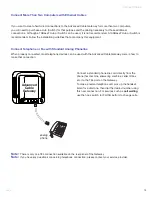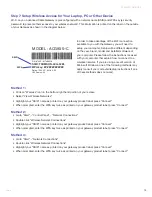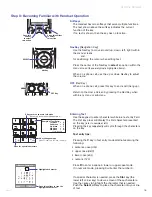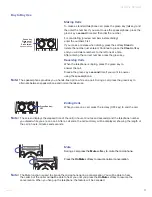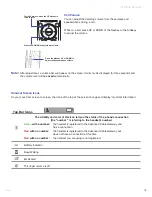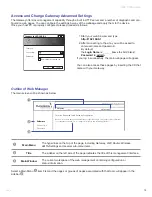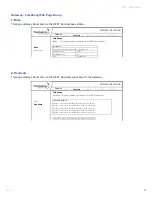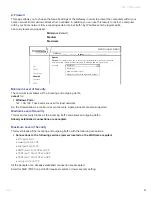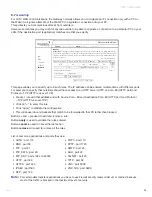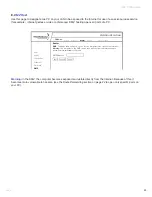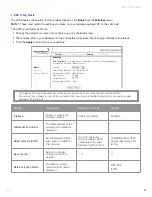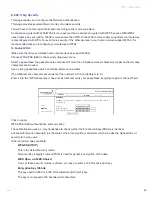
24
3660181C
Web Configuration
5.
Forwarding
For LAN / WAN communications, the Gateway normally allows you to originate an IP connection only with a PC on
the WAN; it will ignore attempts of the WAN PC to originate a connection onto your PC.
This protects you from malicious attacks from outsiders.
However, sometimes you may wish for anyone outside to be able to originate a connection to a particular PC on your
LAN, if the destination port (
application
) matches one that you specify.
This page allows you to specify up to 9 such rules. The IP address can be entered multiple times with different ports.
For example, to specify that outsiders should have access to an HTTP server (HTTP
on port
=80) (HTTP
port
) and
Protocol = TCP (HTTP
runs over
TCP)
• Create 1 rule with that address and with Source Port = 80 and Destination Port =80 (HTTP
port
) and Protocol
= TCP (HTTP
runs over
TCP)
• Click on “+” to enter this rule
• Click “apply” to validate the configuration
• This will cause inbound packets that match to be forwarded to that PC rather than blocked
Buttons
+
and
–
are used to add and remove a rule
Button
apply
is used to validate the rules entered
Button
cancel
is used to cancel the last action
Button
remove
all is used to remove all the rules
List of common applications and ports they use:
• AUTH : port 113
• DNS : port 53
• FTP : port 21
• FTP_DATA : port 20
• FTP_SRV : ports 1024 to 65535
• HTTP : port 80
• HTTPS : port 443
• IPSEC : port 500
• NTP : port 123
• POP3 : port 110
• PPTP : port 1723
• SMTP : port 25
• SSH : port 22
• TELNET : port 23
• TFTP : port 69
• VNC : port 5900
• VNC_http : port 5800
Note
:
For certain data transfer applications you have to use firewall security levels minimum or medium because
most of the traffic is blocked in the maximum level of security.
Administration
Status - Telephony -
Router -
Wireless
EMTA-Settings
Gateway
Router
LAN
WAN
Computer
Firewall
Forward
DMZ
Forwarding
: This page allows incoming requests on specific port numbers to reach web servers,
FTP servers, mail servers, etc. that are located on the LAN so they are accessible from the public
internet. (A table of commonly used port numbers can be found in the user’s manual that came
with this product.)
Application Name
Source Port(s)
Protocol IP Address
Destination Port
Add a Predefined Service:
Service Name
IP Address
192.168.0.97
Up to 9 rules allowed
Total = 1
HTTP 80 TCP 192.168.0.97 80
0 Both 192.168.0.97
0
Remove All
Cancel
Apply


